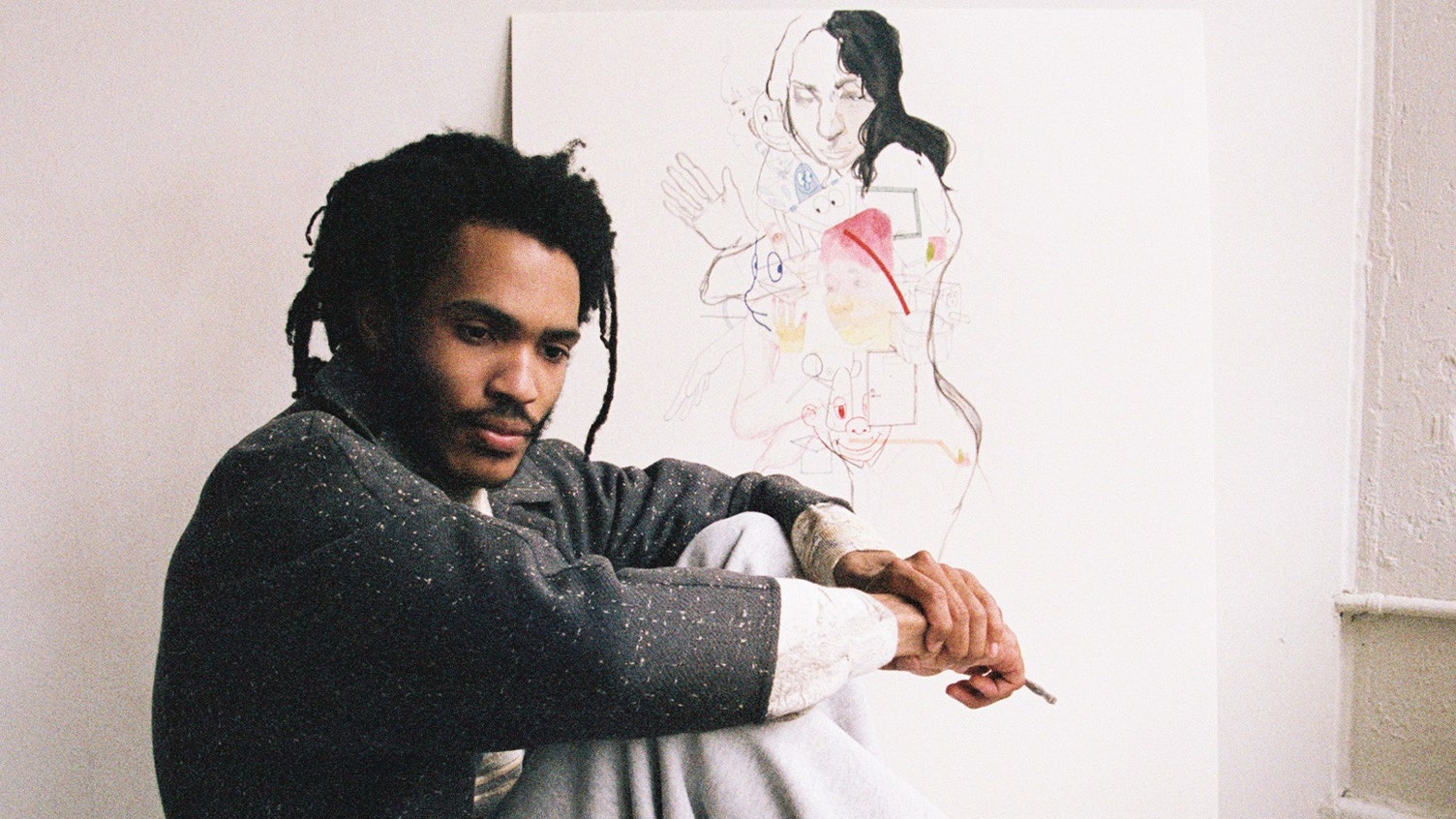Bryant Giles has been making art ever since he can remember. “I started at three years old. I was very quiet growing up, so it was the best way for me to really communicate,” the Chicago-raised and LA-based artist tells Vogue. “Instead of really talking, I would draw.”
In the early stages of his career, Giles would use a “blind” technique, in which he’d draw and paint with his eyes closed, until he was finished with the piece–training himself to rely on his memory, rather than on still life subjects, to create. “I was very inspired to remember the world around me so I can confidently work without reference and create my own world.”
And in 2016, he shared his world at Congruent Space gallery. In 2017, he landed a shoe collaboration and store takeover with Nike. The same year, Giles showcased his exhibition, “Evolution Backwards,” which explored the idea that success comes at a price if we don’t remember to slow down. “That’s how I felt then,” he says. “Like I was on a treadmill, artistically.” The feelings worsening by the time he had showcased his work at Scope Art Fair, in 2018 New York. “I’d realized that I was flat-out exhausted,” Giles recalls, explaining the importance of self-care, even amidst busy times. “I vowed to never do that to myself again.” He’s been using his time to look within, to “[observe] myself, history, my environment that surrounds and those that occupy it,” Giles says. “Not to say I didn’t do so before, as that’s the origin of my work, but it became less over the years.”
Making art is the only career he’s ever known. “The ways I’ve profited from my art itself has [taken] many forms.” Giles explains that even before his first show, he learned a kind of guerilla marketing. “I was selling pieces via social media and by word of mouth around my city,” Giles says. “I think the part I dreaded the most was the negotiating aspect.” Reconciling the “value” of art led him to rethink how he labeled the clothing he created as well. “I’ve always hated the term merchandise and I was putting the same amount of emotion and caution into the garments as the pieces on the walls,” he says. Rebranding clothing as art was the only way, Giles said, to reinforce the value of his own work—no matter the medium.
Giles’s recent works represent his current emotional state: themes of racism, police brutality, flawed systems, and his interpretation of today’s social climate. “It reflects the heaviness I’m feeling these days,” he says. “I find myself in a loop of reflecting on the immense hate. It’s really consumed my work.” Though the process is emotionally intense, Giles says that often results in his most honest work. “I really try to hold on to the kid that was sleeping on the couch with ambitions of owning a studio in Japan. I just had so many dreams and I had so many emotions. I just really want to keep that inner child and still trust myself enough to express how I truly feel. Not censor it.”
Giles credits his success to honesty and commitment, which he says should be the only goal for aspiring artists. “I kind of felt like an outcast,” he says of his childhood. “But I’m really proud that I stayed on this route. If you feel like your route speaks to you, then do it, and don’t have any regrets.”
In a sense, these personal reflections are the subject of his forthcoming project, “Where Did The Fun Go?” (the opening date is currently contingent on the safety regulations of Covid-19). Here, Giles aims to showcase “the trials and tribulations that is being a human, as we age, the fun often leaves the equation,” he says. “This exhibit is me trying to grasp onto my adolescence through the thick and thin.” Giles hopes that he will be able to show his work later this year, adding, “if we find a way to do it safely.”
Until then, he says he will keep on creating. “As an artist, your purpose is to create a voice for those who are voiceless in a society that doesn’t really want to hear them.”
